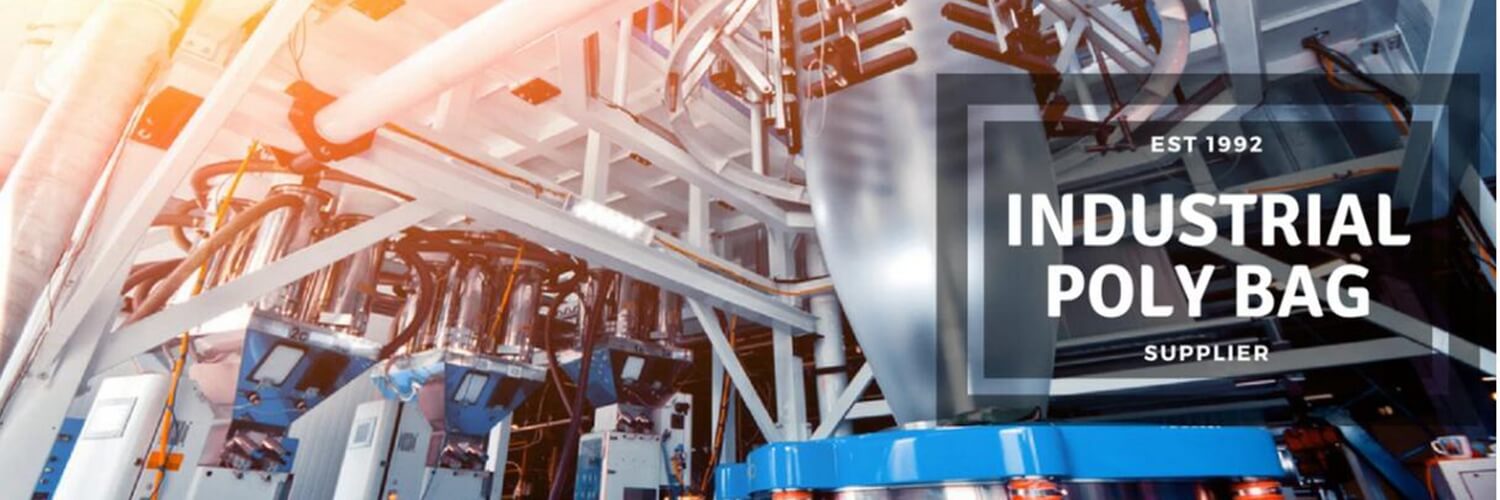
The process for making polyethylene film and bags is called extrusion. This plastic film manufacturing process starts with melting down small plastic pellets, ( called resin ), until they become molten and pliable.
The molten plastic is pushed, ( extruded ), through a circular die to form a continuous tube of plastic called the bubble. The bubble is inflated with air to the desired diameter and drawn vertically up a tower giving it time to cool before it is flattened to its lay flat width. The thickness of the film is controlled by the speed at which it is pulled from the die. The width of the film is controlled by the amount of air inserted in the bubble. Thus the secret to producing high quality film is having good equipment that maintains a consistent flow of material throughout the process. Film color can be changed in the molten process by adding resin pellets that contain colored pigment.
The following process is flexographic printing, which involves platemaking, mounting, and printing.
There are three methods in platemaking, the first of which is plate development using light-sensitive polymer. The second method uses a computer guided laser to etch the image onto the printing plate. And the third method requires that the plate goes through a molding process.
Mounting is a process used to ensure an accurate picture image. For each color to be printed, a plate is made and eventually put on a cylinder, which is placed in the printing press. Mounting marks are put on flexographic plates to help with precise alignment on the cylinder. These marks are key to aligning each color in the printing press. Equipment is extremely important at this point in the process as highly accurate and specific machinery is made for mounting these plates on the printing cylinders.
Printing is the final process in flexographic printing and produces the end result of a sharp looking package. The process requires that a positive mirrored master of the required image is created as a 3D relief in a rubber or polymer material. The image areas are raised above the non-image areas on the rubber or polymer plate and ink is transferred from the ink roll to the anilox roll where excess ink is removed before inking the printing plate. The polyethylene film is finally pressed between the plate and the impression cylinder to transfer the image.
Following flexographic printing there are many “inline” process. A bag making machine can seal and perforate the film to form varying lengths of bags on rolls. The film can be cut and separated for individually cut bags. In some cases, with small bags, machine cycle speeds may produce up to 53,000 bags per hour. In other instances, a large bag may run as slowly as 2,000 bags per hour. You can also add vent holes, which are punched through the film in a variety of patterns and sizes.
A conclusion from above is that, there are so many processes in the poly mailer manufacturing. In each process, the defected percentage can be very different. For example, now we need to produce 50,000pcs poly mailer with a pink background and purple logo. In extrusion stage, we may need to produce plastic film enough for 60,000pcs poly mailers. You may ask why? Let me show you.
First, not all the file blown out with correct thickness, or say even surface. At the beginning, where machine starts running, the film is uneven and there is no choice some quantity will be thrown away. This also happens when the product has a specific film color. So in extursion stage, 1000-2000pcs material will be wasted.
Second, printing stage will also waste some quantity in order to run the machine and print out a correct color. This can waste 300-1000pcs. The more colors printed, the more quantity waste.
Third, each inline process following will incur some defect products, though not as many as the above two processes, but it is inevitable.
So far, I guess you understand why our custom poly mailer has a higher MOQ than other custom packaging products. With a MOQ 1000pcs, we are actually producing double quantity you are ordering.